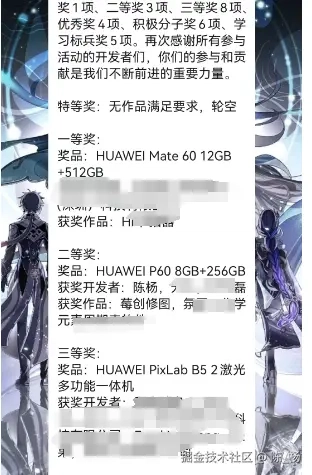Setting Up a Powerful Windows Development Environment
Gone are the days when developers needed to dual-boot Linux or settle for a subpar development experience on Windows. With modern tools and the right setup, Windows can be transformed into a robust development platform that rivals any Unix-based system. This guide will walk you through creating a professional-grade development environment on Windows, combining the best of both worlds: Windows' user-friendly interface and Linux's powerful development tools. What You'll Learn Setting up WSL2 for a native Linux experience Installing and configuring development tools Managing multiple programming language versions Creating an efficient coding environment Running containerized applications seamlessly Prerequisites Windows 10/11 (Pro) At least 8GB RAM (16GB recommended) 50GB free disk space Administrator access 1. Windows Subsystem for Linux (WSL2) WSL2 provides a full Linux kernel and seamless Windows-Linux integration. It's the foundation of our development environment. Why WSL2? Native Linux system calls Full system call compatibility Excellent filesystem performance Seamless integration with Windows tools Installation Steps Just open a new PowerShell or Windows Command Prompt in administrator mode and enter the wsl install command. # Install WSL wsl --install The --install command performs the following actions: Enables the optional WSL and Virtual Machine Platform components Downloads and installs the latest Linux kernel Sets WSL2 as the default Downloads and installs the Ubuntu Linux distribution (default) Note: You will need to restart your machine during this installation process. Once the process of installing your Linux distribution with WSL is complete, open the distribution using the Start menu. You will be asked to create a Username and Password for your Linux distribution. This username and password is specific to each separate Linux distribution that you install and has no bearing on your Windows username. 2. Terminal Setup Now that we have Linux running inside Windows we can configure our distribution and terminal to our liking. We can install Oh My Zsh, change the prompt, install plugins, etc. For a detailed guide on terminal customization, check out my previous post: My Terminal Setup for 2025

Gone are the days when developers needed to dual-boot Linux or settle for a subpar development experience on Windows. With modern tools and the right setup, Windows can be transformed into a robust development platform that rivals any Unix-based system.
This guide will walk you through creating a professional-grade development environment on Windows, combining the best of both worlds: Windows' user-friendly interface and Linux's powerful development tools.
What You'll Learn
- Setting up WSL2 for a native Linux experience
- Installing and configuring development tools
- Managing multiple programming language versions
- Creating an efficient coding environment
- Running containerized applications seamlessly
Prerequisites
- Windows 10/11 (Pro)
- At least 8GB RAM (16GB recommended)
- 50GB free disk space
- Administrator access
1. Windows Subsystem for Linux (WSL2)
WSL2 provides a full Linux kernel and seamless Windows-Linux integration. It's the foundation of our development environment.
Why WSL2?
- Native Linux system calls
- Full system call compatibility
- Excellent filesystem performance
- Seamless integration with Windows tools
Installation Steps
Just open a new PowerShell or Windows Command Prompt in administrator mode and enter the wsl install command.
# Install WSL
wsl --install
The --install command performs the following actions:
- Enables the optional WSL and Virtual Machine Platform components
- Downloads and installs the latest Linux kernel
- Sets WSL2 as the default
- Downloads and installs the Ubuntu Linux distribution (default)
Note: You will need to restart your machine during this installation process.
Once the process of installing your Linux distribution with WSL is complete, open the distribution using the Start menu.
You will be asked to create a Username and Password for your Linux distribution. This username and password is specific to each separate Linux distribution that you install and has no bearing on your Windows username.
2. Terminal Setup
Now that we have Linux running inside Windows we can configure our distribution and terminal to our liking.
We can install Oh My Zsh, change the prompt, install plugins, etc.
For a detailed guide on terminal customization, check out my previous post: My Terminal Setup for 2025




















































%20Abstract%20Background%20112024%20SOURCE%20Amazon.jpg)






















































































































![[The AI Show Episode 142]: ChatGPT’s New Image Generator, Studio Ghibli Craze and Backlash, Gemini 2.5, OpenAI Academy, 4o Updates, Vibe Marketing & xAI Acquires X](https://www.marketingaiinstitute.com/hubfs/ep%20142%20cover.png)
























































































































































































































































-Nintendo-Switch-2-–-Overview-trailer-00-00-10.png?width=1920&height=1920&fit=bounds&quality=80&format=jpg&auto=webp#)





















_Anna_Berkut_Alamy.jpg?#)













































































































![YouTube Announces New Creation Tools for Shorts [Video]](https://www.iclarified.com/images/news/96923/96923/96923-640.jpg)





































































![[Weekly funding roundup March 29-April 4] Steady-state VC inflow pre-empts Trump tariff impact](https://images.yourstory.com/cs/2/220356402d6d11e9aa979329348d4c3e/WeeklyFundingRoundupNewLogo1-1739546168054.jpg)






























































